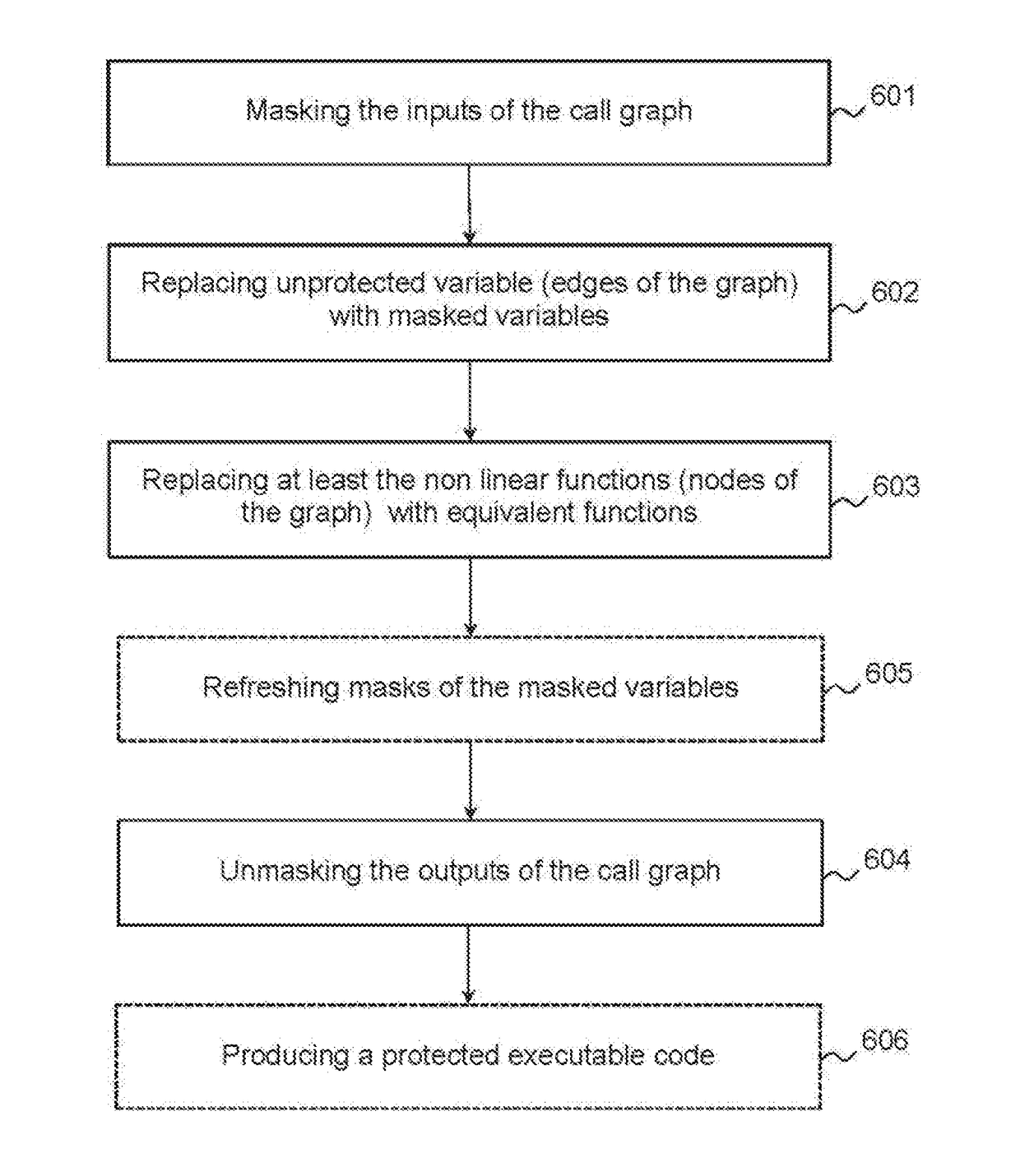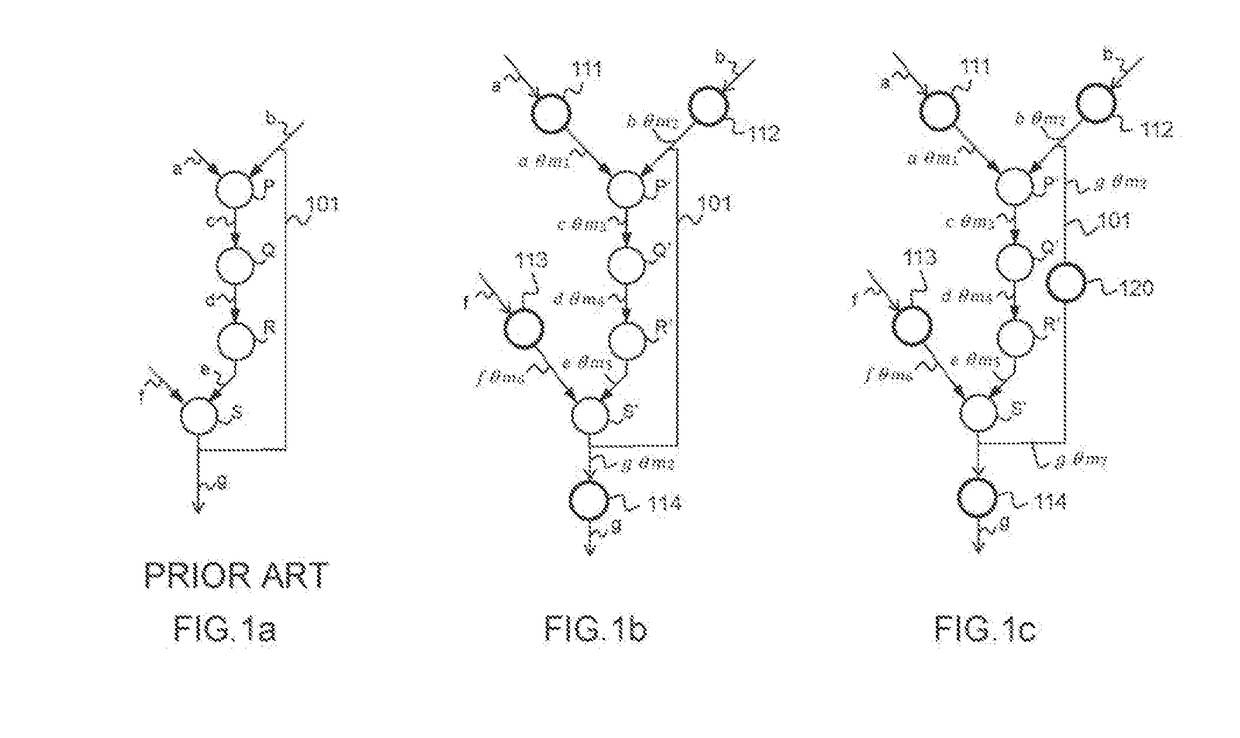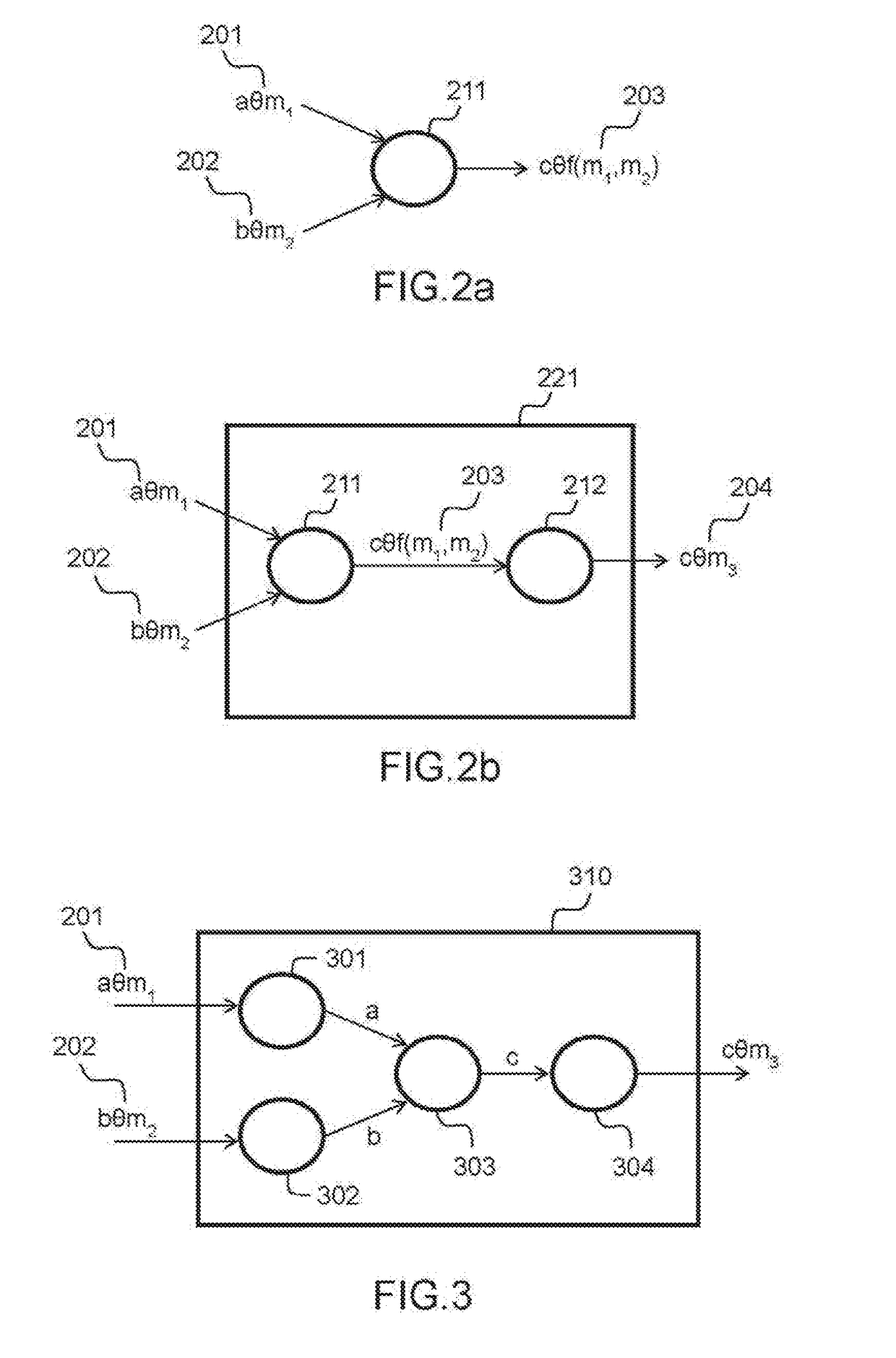Automatic insertion of masking into an algorithm
a masking algorithm and automatic insertion technology, applied in the field of cryptography, can solve the problems of inability to mask, vulnerability might appear, computationally difficult brute force decoding, etc., and achieve the effect of increasing the robustness of an algorithm
- Summary
- Abstract
- Description
- Claims
- Application Information
AI Technical Summary
Benefits of technology
Problems solved by technology
Method used
Image
Examples
first embodiment
[0060]FIG. 1b represents a call graph protected according to the invention.
[0061]In order to provide robustness against cryptanalysis and content recovery attacks, the invention is based on masking each variable of the program with a mask and, according to some advantageous embodiments of the invention, on changing this mask during the program execution.
[0062]To this end, the input variables (a, b, f) are masked (111, 112, 113). The mask values (m1, m2, m6) can be chosen randomly. The masked variables are designated thereinafter as aθm1, bθm2, and fθm6.
[0063]Each unmasked internal variables of the call graph (c, d, e) is then replaced by a masked variable (cθm3, dθm4, eθm5). The mask may be chosen randomly, or, when the internal variable is the output of a linear function, inherited accordingly from the masks used for the inputs of the function.
[0064]In such embodiment, in order to guaranty the consistency of the protected call graph, when an internal variable is used both as input ...
PUM
 Login to view more
Login to view more Abstract
- a step of masking each input of the call graph,
- a step of replacing each unmasked internal variable of the call graph with a masked variable,
- a step of replacing at least each non-linear function of the call graph with an equivalent function that applies to masked variables,
- a step of unmasking each output of the call graph.
Description
Claims
Application Information
 Login to view more
Login to view more - R&D Engineer
- R&D Manager
- IP Professional
- Industry Leading Data Capabilities
- Powerful AI technology
- Patent DNA Extraction
Browse by: Latest US Patents, China's latest patents, Technical Efficacy Thesaurus, Application Domain, Technology Topic.
© 2024 PatSnap. All rights reserved.Legal|Privacy policy|Modern Slavery Act Transparency Statement|Sitemap



